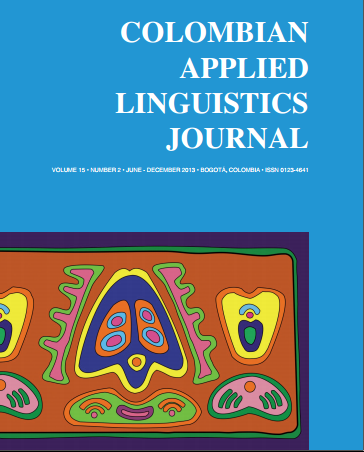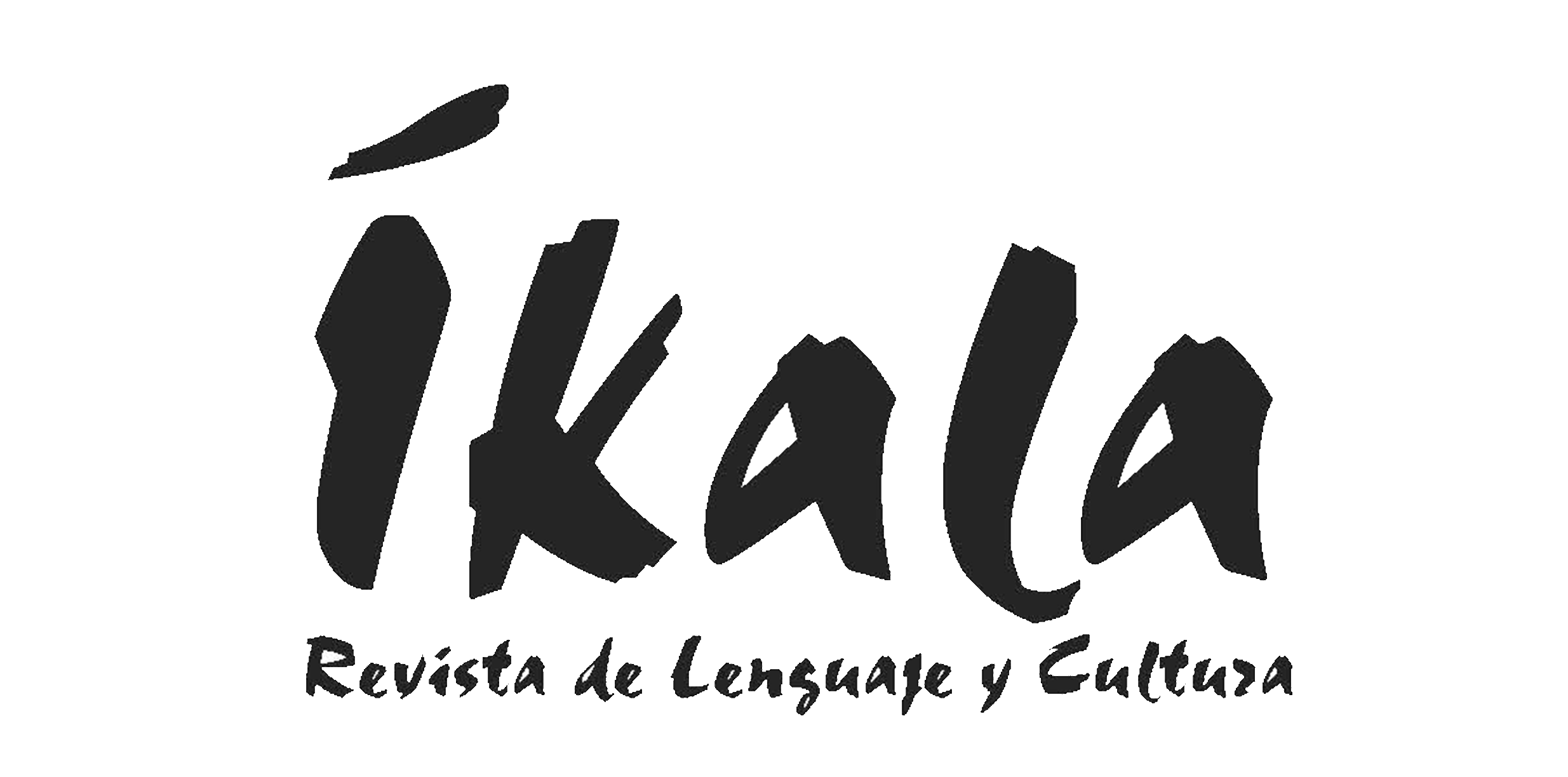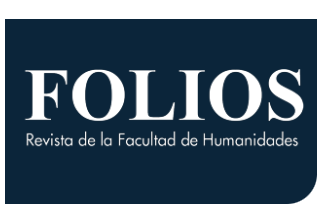DOI:
https://doi.org/10.14483/udistrital.jour.calj.2013.2.a02Published:
2013-07-01Issue:
Vol 15, No 2 (2013) July-DecemberSection:
Research ArticlesWriting skill enhancement when creating narrative texts through the use of collaborative writing and the Storybird Web 2.0 tool*
Mejoras en las habilidades escriturales a través del uso de escritura colaborativa y de Storybird 2.0 al crear textos narrativos
Keywords:
CALL, escritura colaborativa, Web 2.0, Storybird (es).Keywords:
CALL, Collaborative writing (CW), Web 2.0, Storybird (en).Abstract (en)
The purpose of this article is presenting how the use of Collaborative Writing (CW) through Storybird, a web 2.0 tool which promotes the creation of stories collaboratively, led two groups of learners to improve certain specific aspects of their writing skill. Both groups, the former one with fifteen students and the latter one with ten students, were about to complete a two-year general English course at Instituto de Lenguas de la Universidad Distrital (ILUD) in Bogotá, Colombia. Although their English language proficiency was expected to be at an upper-intermediate level (B2) according to the Common European Framework of Reference for languages (CEFR), their writing skill was below average. Two pedagogical interventions were performed at two diferent times, the first one from October to November 2010, and the second one from March to April 2011. Pre and posttests, focus groups, surveys and reflective journals were used and data was analyzed following coding procedures. The findings revealed that the CW supported with Storybird encouraged learners to create narrative texts and their positive attitude towards the production of stories increased. Moreover, an improvement in learners’ vocabulary and increased attempts to use complex language forms to write were noticeable.
Abstract (es)
El propósito de este artículo es presentar cómo el uso de la escritura colaborativa a través de Storybird, una herramienta web que promueve la creación de historias en equipo, llevó a dos grupos de estudiantes a mejorar aspectos específicos en su habilidad para escribir. Ambos grupos, el primero de quince estudiantes y el segundo de diez, se encontraban a punto de finalizar un curso de inglés general de dos años en el Instituto de Lenguas de la Universidad Distrital (ILUD) en Bogotá, Colombia. Aunque su nivel de suficiencia en el idioma inglés se esperaba que fuera de nivel intermedio alto (B2) de acuerdo al Marco Común Europeo de Referencia para lenguas, su habilidad para escribir se encontraba por debajo del promedio. Se realizaron dos intervenciones pedagógicas en dos periodos de tiempo diferentes, el primero de octubre a noviembre de 2010, y el segundo de marzo a abril de 2011. Los datos se recolectaron en pre y pos-tests, grupos focales, encuestas y diarios de reflexión, y luego se triangularon siguiendo procedimientos de codificación. Los resultados revelaron que la escritura colaborativa apoyada con Storybird motivó a los estudiantes a crear textos narrativos y su actitud positiva hacia la producción de historias aumentó. Por otra parte, se notó una mejora en el vocabulario de los estudiantes y sus intentos para utilizar formas de lengua más complejas aumentaron.
References
Aguirre, A. (2010).Writing hyperstories Collaboratively
for an Authentic Audience. Universidad Distrital.
Bogotá Colombia.
Auerbach, C., & Silverstein, L. (2003). Qualitative data:
An introduction to coding and analysis.New York:
New York University Press.
Avery, S. (2011, September 5). Storybird a Collaborative
Storytelling Tool. Retrieved from http://techtutorials.
edublogs.org/2011/09/05/storybird/
Beatty, K. (2003). Computer Assisted language learning.
England: Pearson Education Limited..
Beltrán, A. (2010). EFL University Learners Working
Collaboratively with Digital Storyboards. Bogotá,
Colombia: Universidad Distrital..
Beltrán, J. (2009).Using the Online Software Hot Potatoes to Help First Graders Develop beginning
Writting. Chía, Colombia: Universidad de la Sabana..
Benson, P. (1996) Concepts of autonomy in language
learning. In R. Pemberton, et al. (eds) Taking Control:
Autonomy in Language Learning (pp. 27-34). Hong
Kong: Hong Kong University Press.
Brown, H. D. (1994). Teaching by principles: An interactive approach to language pedagogy.Englewood
Cliffs, N.J: Prentice Hall Regents.
Castells, M., (2003).La Galaxia Internet: Reflexiones sobre internet, empresa y sociedad. Barcelona: Areté.
Chapelle, C. (2003). English language learning and
technology: Lectures on applied linguistics in the
age of information and communication technology.
Amsterdam: John Benjamins Pub.
Davies G. Walker R., Rendall H. & Hewer S. (2010) Introduction to Computer Assisted Language Learning
(CALL). Module 1.4. In Davies G. (ed.), Information
and Communications Technology for Language
Teachers (ICT4LT).Slough: Thames Valley University
[Online].
Dabbs, L. (2011, July 19). New teacher Boot Camp
Week 3-Using Storybird. Retrieved from http://www.
edutopia.org/blog/storybird-new-teacher-bootcamp-lisa-dabbs
Ding, A. (2003). Theoretical and Practical Issues in the
Promotion of Collaborative Learner Autonomy in
a Virtual Self-access Centre. In B. Holmberg, M.
Shelley & C. White, (Eds). Distance education and
languages: Evolution and change (2005).Clevedon,
Hants, England: Multilingual Matters.
Dudeney, G., & Hockly, N. (2007). How to teach English
with technology.Harlow: Pearson/Longman.
Elbow, P. (2000).Everyone can write: Essays toward a
hopeful theory of writing and teaching writing.New
York: Oxford University Press.
Elola, I. & Oskoz, A. (2010). Collaborative Writing: Fostering Foreign Language and Writing Conventions
Development. Language Learning and Technology,
(3), 51 – 71.
Harmer, J. (2004). How to teach writing.Harlow: Longman.
Harmer, J. (2007).The practice of English language teaching: DVD.Harlow: Pearson/Longman.
Hubbard, P. (Ed.) (2009). A General Introduction to
Computer Language Assisted Language Learning.
Computer Assisted Language Learning: Critical
Concepts in Linguistics. Volume I. Advance online
publication. Retrieved from http://www.stanford.
edu/~efs/callcc/callcc-intro.pdf
Jimenez, C. (2009).Webquests and the Improvement of
Critical Reading Skills in a group of University Students. Chia, Colombia: Universidad de La Sabana..
Kessler, C. (1992).Cooperative language learning: A
teacher’s resource book.Englewood Cliffs, N.J:
Prentice Hall Regents.
Writing skill enhancement when creating narrative texts
Herrera Y., (2013) Colomb. Appl. Linguist. J.
ISSN 0123-4641 • Bogotá, Colombia. Pages 166 - 183 180 180
Laningham, S. (2004). DeveloperWorks Interviews: Tim
Berners-Lee. Retrieved November 13, 2011, from:
http://www.ibm.com/developerworks/podcast/dwi/
cm-int082206txt.html
Levy, M., (2006). Effective Use of CALL Technologies:
Finding the Right Balance. In Donaldson & Haggstrom (Ed).Changing language education through
CALL (pp. 1-18). Abingdon, England: Routledge.
Linares, A. (2010). Using Visual Literacy in a Sequence
of Picture Stories to Write Narratives. Bogotá: Universidad Distrital..
Little, D. (2000) Learner autonomy and human interdependence: Some theoretical and practical
consequences of a social-interactive view of cognition, learning and language. In B. Sinclair et al. (eds).
Learner Autonomy, Teacher Autonomy: Future Directions (pp. 15-23). London: Longman.
MEN, (2005). Bases para una Nación Bilingüe y Competitiva. Ministerio de Educación Nacional. Retrieved
April 1, 2013, from: http://www.mineducacion.gov.
co/1621/article-97498.html
Nordin, Y. (2010). Web 2.0 and Graduate Research
Storybird. Retrieved from: http://edpsychbsustudentwork.pbworks.com/f/3-StoryBirdWeb+2.0+and+Graduate+Research.pdf
Norton, L. (2009).Action research in teaching and learning: A practical guide to conducting pedagogical
research in universities.London: Routledge.
Nunan, D. (1992).Collaborative language learning and
teaching.Cambridge language teaching library.
Cambridge [England: Cambridge University Press.
Nunan, D. (1999). Writing. Newbury House Teacher
Development (Ed.),Second language and teaching
(pp. 271-299). Boston, Massachusetts: Heinle &
Heinle Publishers.
Peachey, N. (2009). Web 2.0 Tools for Teachers. Retrieved from: http://www.scribd.com/doc/19576895/
Web-20-Tools-for-Teachers. 28 Nov. 2010.
Pegrum, M., (2009). Communicative Networking and
Linguistic Mashups on web 2.0. In M. Thomas (Ed.),
Handbook of research on Web 2.0 and second language learning (pp. 20-41). Hershey, PA: Information
Science Reference.
Phillips, P. P., & Stawarski, C. A. (2008). Data collection:
Planning for and collecting all types of data.San
Francisco: Pfeiffer
Popham, W. J. (1993). Educational evaluation. Needham
Heights, MA: Allyn and Bacon.
Prensky, M. (2010). Teaching digital natives: Partnering
for real learning.Thousand Oaks, CA: Corwin.
Reason, P., & Bradbury, H. (2006).Handbook of action
research. London: SAGE.
Richards, J. C., & Rodgers, T. S. (2001).Approaches
and methods in language teaching.Cambridge:
Cambridge University Press.
Roger E., Kagan O. & Kagan S. (1992). About Cooperative Learning. In Kessler (Ed.), Cooperative Language
Learning: A Teachers’ Resource Book (pp. 1-30).
Englewood Cliffs, N.J: Prentice Hall Regents.
Schwartz, D. (1998). The Productive Agency that Drives
Collaborative Learning. In Dillenbourg (Eds.), Collaborative Learning: Cognitive and Computational
Approaches (pp. 197-218). Amsterdam: Pergamon.
Scrivener, J. (2005).Learning and Teaching. A Guidebook
for English Language Teachers. Macmillan books
for teachers.
Strauss, A & Corbin, J. (1990) Basics of Qualitative
research. Grounded theory applications and techniques. London: Seige Publications.
Storybird, (n.d.). Retrieved April 4, 2012, from http://
educ5553.wikispaces.com/file/view/Storybird.pdfPrincipio del formulario
Tapscott, D. (2009). Grown up digital: How the net
generation is changing your world.New York:
McGraw-Hill.
Thomas, M., & Reinders, H. (2010). Task-based language learning and teaching with technology.London:
Continuum.Final del formulario
Totten, S., Sills, T., Digby, A., & Russ, P. (1991). Cooperative learning: A guide to research. New York: Garland.
Vallance M., Vallance K. & Masahiro M., (2009). Criteria
for the Implementation of Learning Technologies. In
Thomas, M. (Ed.),Handbook of research on Web 2.0
and second language learning (pp. 1-19). Hershey,
PA: Information Science Reference.
Wallace, M. J. (1998).Action research for language teachers. Cambridge teacher training and development.
Cambridge: Cambridge University Press.
How to Cite
APA
ACM
ACS
ABNT
Chicago
Harvard
IEEE
MLA
Turabian
Vancouver
Download Citation
Metrics
License
This work is licensed under a Creative Commons Attribution-NonCommercial-NoDerivatives 4.0 International License.
Attribution — You must give appropriate credit, provide a link to the license, and indicate if changes were made. You may do so in any reasonable manner, but not in any way that suggests the licensor endorses you or your use.
NonCommercial — You may not use the material for commercial purposes.
NoDerivatives — If you remix, transform, or build upon the material, you may not distribute the modified material.
The journal allow the author(s) to hold the copyright without restrictions. Also, The Colombian Apllied Linguistics Journal will allow the author(s) to retain publishing rights without restrictions.









